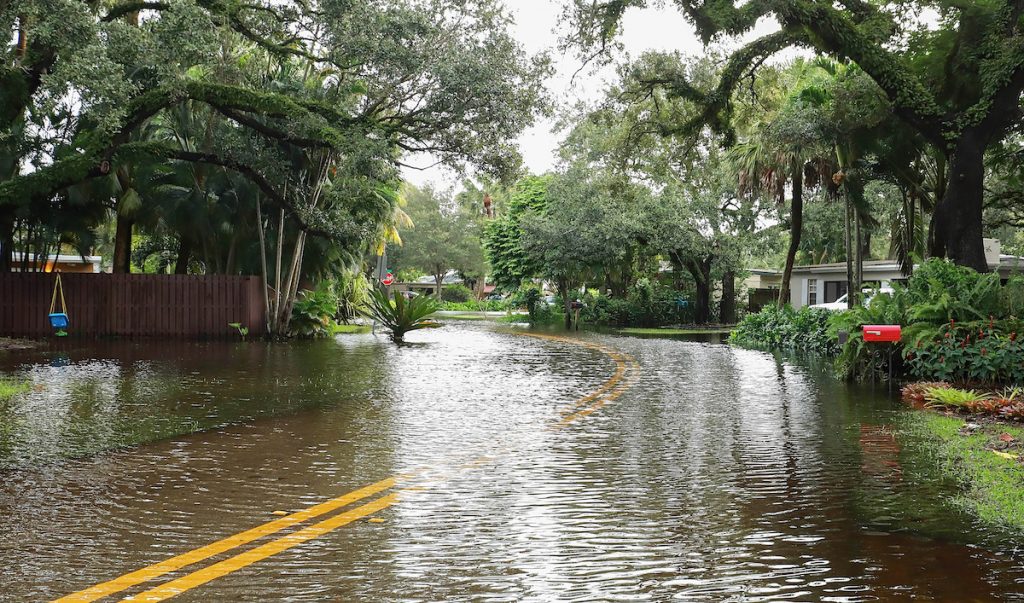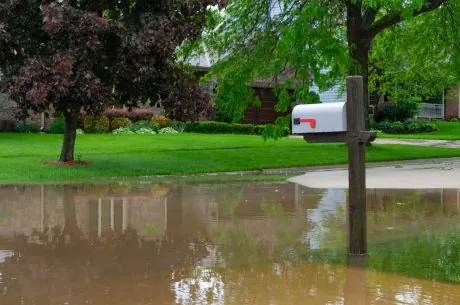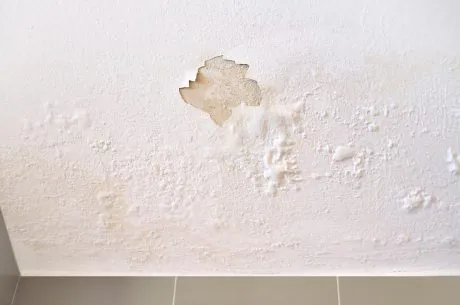Flash floods can be a serious threat to you and your home. Whether due to bacteria, mold, electricity, or rapid streams, they can pose a danger to the health and safety of those affected by its harmful waters.
For example, you can contract a disease by eating or drinking contaminated products. Floodwaters can inadvertently cause an outbreak of bacteria like E. coli or salmonella in food during a power surge. There’s also a risk of skin infection if you come in contact with floodwater.
Here are the most common hazards during and after a home flood caused by flash flooding — and tips to stay safe from them.
Before a Flood
Here’s how to help keep your family and your home safe before a flash flood occurs:
- Prepare an emergency kit including first-aid supplies, non-perishable food, a flashlight, batteries, and cash.
- Make a family communication plan. Choose an out-of-state friend or relative as your “check-in” person.
- Know your area’s flood risk. Check if your home is located within FEMA’s flood zone.
- If you reside in a particularly high-flood risk zone, raise the air conditioner, water heater, and electric panel.
- Review your flood insurance. Does it cover the contents of your home? If you don’t have flood insurance, consider acquiring it soon, as it goes into effect 30 days after purchasing it.

During a Flood Watch or Warning
If a flood watch or a flood warning has been issued, follow these tips:
- Be alert about current weather conditions and forecasts. Listen to local news or NOAA Weather Radio for flood status updates.
- Prepare your home. Move important items to higher levels. Store valuables in waterproof containers. Anchor heavy outdoor objects like grills and propane tanks.
- Fill up your car. Keep your gas tank full in case you need to evacuate.
- Keep cash on hand. In case ATMs are unavailable, have cash ready.
- Practice your family communication plan. Review it with family members so they know what to do.
- Know where to go. If directed by local authorities, evacuate immediately to higher ground or stay on high ground.
- If you have to leave your home, turn off all utilities at the main switches or valves if instructed to do so. This will help prevent further damage and safety hazards.
- Stock up on supplies. Ensure you have enough nonperishable food and water for at least three days in your emergency kit.
- Contact local authorities to find out where you can get sandbags or other flood-protection materials.
- Keep immunization records accessible or track the year of your most recent tetanus vaccination. Immunization records should be kept in a waterproof container.
- If you can’t evacuate, go to your highest possible floor since floodwater rises quickly. If time is short, get to the top floor, attic, or roof.
- Store exterior items inside, such as lawn furniture and trash cans, or keep them secured.
How to Prevent Infections During a Flood
If your home was flooded, there is a chance it could be contaminated with sewage. This can lead to infection, so follow these precautions accordingly:
- Throw away food that has come in direct contact with floodwater, including bottled drinks and products in jars, or any food that looks and smells unusual. If intact, canned goods may be washed and disinfected.
- Discard perishable foods, like meat or eggs, that have been left in temperatures above 41 degrees Fahrenheit for more than four hours.
- All medicines, cosmetics, and other personal toiletries that have come into contact with floodwater should be discarded.
- If you’ve made contact with floodwater, practice good hygiene: wash hands frequently with soap and water.
- Don’t let children play in floodwater or with toys contaminated by floodwater.
- If you have an open skin wound, keep it clean and cover it with a waterproof bandage, and avoid floodwater exposure.
Avoid Rapid-Flowing Waters
If a flash flood has inundated local roads in your area, follow these safety tips:
- Don’t drive through flowing water, even if it’s just a few inches deep. Your vehicle may break down or get swept away.
- Monitor road conditions and obey closure signs that indicate impacted roads. Be aware of road hazards such as mud, building debris, tree limbs, and potholes.
- Never walk through flowing water. Rapidly moving water can be deadly, even if you can swim.

Beware of Respiratory Hazards
Tips to avoid respiratory hazards include:
- Avoid areas with mold growth. Mold can form within 24-48 hours of a flood. Mold must be removed before moving back to your home. For mold and water damage cleanup, hire a professional damage restoration company, such as PuroClean.
- Only run gasoline, propane, and diesel-powered equipment in well-ventilated outdoor areas to prevent carbon monoxide poisoning.
- Stay away from building materials that may contain lead, such as painted surfaces and pipes.
- Be aware of asbestos poisoning. Don’t enter areas where asbestos may have been used as construction material.
Steer Clear of Chemical Exposure
When returning to your home after a flood, be aware of potential chemical hazards that may have been caused by floodwaters.
First, don’t move propane tanks yourself, as they may cause a fire or explode. Call the state fire marshal’s office immediately.
If you see car batteries in floodwaters, don’t get close to them to avoid electrical shock. Also, beware of any acid that may have spilled from a damaged car battery.
How to Avoid Electrical and Gas Dangers
Flash floods also bring electrical and gas dangers. Here’s how to stay safe from them:
- Never touch electrical lines, wires, equipment, and fixtures during and after a flood. Report fallen power lines.
- Don’t walk or drive through floodwater if downed power lines are in it.
- Never enter your home if the main power switch was not turned off before flooding. Wait until a qualified electrician has declared your home safe before re-entering.
- Evacuate your home immediately if you detect or smell gas and notify the gas company.
Don’t Forget About Debris
In the wake of a flood, all kinds of debris may be potentially dangerous. Watch out for broken glass, construction or demolition debris, and tree limbs.
For Water Damage Restoration, Call the PuroClean flood cleanup experts!
Flash floods are devastating events. The aftermath of a flood can be just as dangerous as the flood itself. That’s why it’s important to follow these flood safety tips and take immediate precautions.
If your home has been flooded, call PuroClean for water damage restoration services. We have the experience and expertise to quickly and safely remove water and restore your home to its pre-flood condition. Visit our website or call us at (800)775-7876 to connect with your local PuroClean office today.
To learn more about home flooding safety, check out what to do after a basement flood and how to protect your home from spring flooding.




